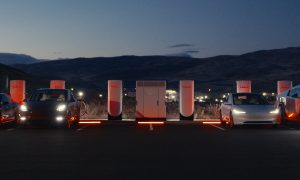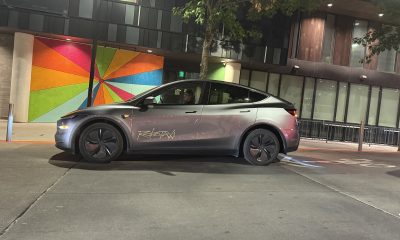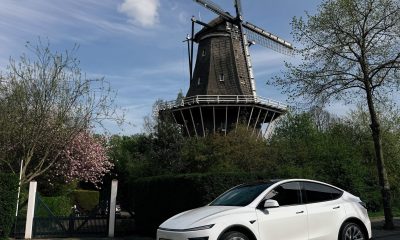

News
TX fire chief slams inaccurate Tesla crash coverage with firsthand details on Model S fire
Immediately following the fatal Tesla crash in Texas this weekend, reports from both local and national media outlets emerged citing the statements of Harris County Pct. 4 Constable Mark Herman, who remarked that police were 100% certain that there was no one in the driver seat of the ill-fated Model S when it crashed. Herman also commented that the Tesla fire was so severe that it took over 30,000 gallons of water and four hours to extinguish the flames from the crash, and that firefighters had to reach out to the EV maker for help in battling the fire.
These statements have since been debunked (at least to some degree) by Tesla CEO Elon Musk, who noted that data logs that have been recovered so far from the ill-fated Model S indicate that Autopilot was not enabled during the crash, and that the vehicle did not have any Full Sell-Driving functions activated. Musk’s update essentially threw a wrench on the pervading narrative that Autopilot likely caused the tragic crash.
Your research as a private individual is better than professionals @WSJ!
Data logs recovered so far show Autopilot was not enabled & this car did not purchase FSD.
Moreover, standard Autopilot would require lane lines to turn on, which this street did not have.
— Elon Musk (@elonmusk) April 19, 2021
And now, even the reports about the Tesla fire have been thrown into question–by the man whose team extinguished the blaze no less. In a statement to the Houston Chronicle, Palmer Buck, fire chief for The Woodlands Township Fire Department, noted that contrary to some reports in the media, the Tesla Model S fire did not burn out of control for four hours.
Interestingly enough, Buck remarked that his team actually managed to put down the fire within two to three minutes, which was enough for authorities to see that there were occupants in the vehicle. After these first two to three minutes, it was only a matter of keeping the batteries as cool as possible by pouring small amounts of water into the damaged battery pack. Buck described the fire department’s strategy in the following statement.
“With respect to the fire fight, unfortunately, those rumors grew way out of control. It did not take us four hours to put out the blaze. Our guys got there and put down the fire within two to three minutes, enough to see the vehicle had occupants. After that, it was simply cooling the car as the batteries continued to have a chain reaction due to damage.
“We could not tear it apart or move it around to get ‘final extinguishment’ because the fact that we had two bodies in there and it was then an investigation-slash-crime scene. We had to keep it cool, were on scene for four hours, but we were simply pouring a little bit of water on it. It was not because flames were coming out. It was a reaction in the battery pan. It was not an active fire,” Buck said.
As for the rumors that the fire department had to call a Tesla hotline for tips on how to handle a battery fire, the Fire Chief stated that these reports were untrue. “We did not (call Tesla), and I do not know where (that rumor) came from. There is a chance someone else did, maybe the Harris County Fire Marshal, but we did not call (Tesla). Tesla has an emergency manual for first responders,” Buck said. He also noted that he is not aware of Tesla having a hotline for tips on how to control a battery fire.
Buck also provided some new details about the Model S crash and how the fire department was involved. According to the fire chief, the first calls about the incident did not involve reports about a car at all. Instead, initial reports were about a fire in the woods. And while the Model S fire was notable when the firefighters arrived, it only took minutes to control the blaze from the vehicle.
“The first calls that came in were a fire in the woods. Then we got at 9:30 p.m. where we got the first call when someone said, ‘I see a car in a tree, and it is on fire. They reported a car hit a tree, and it had exploded… That is when we added extra units (to the response). There is a big lake, and (the accident) was just to the left of the lake, closer to the exiting part of the street, not the end of the cul de sac. It was at an undeveloped lot.
“(The Tesla) was heavily involved in flames. When the fire was put out, it was noticed there were two bodies (inside), and they were deceased. They continued extinguishment of the woods around (the car), putting out the trees and pine needles and what have you. I was there probably five to 10 minutes after that and at that point, every once in a while, the (battery) reaction would flame and it was mainly keeping water pouring on the battery,” Buck explained, adding that this was a process recommended by Tesla in cases of burning batteries.
While a number of the initial reports about the tragic Tesla crash this weekend have been debunked by Elon Musk and now, the fire chief for The Woodlands Township Fire Department, the incident continues to attract some degree of drama. As per recent reports, Harris County Pct. 4 Constable Mark Herman has stated that investigators would be serving a search warrant on Tesla to gain all data from the ill-fated Model S. Federal regulators from the NHTSA and NTSB have also launched an investigation into the crash.
Don’t hesitate to contact us for news tips. Just send a message to tips@teslarati.com to give us a heads up.
Elon Musk
Tesla investors will be shocked by Jim Cramer’s latest assessment
Jim Cramer is now speaking positively about Tesla, especially in terms of its Robotaxi performance and its perception as a company.
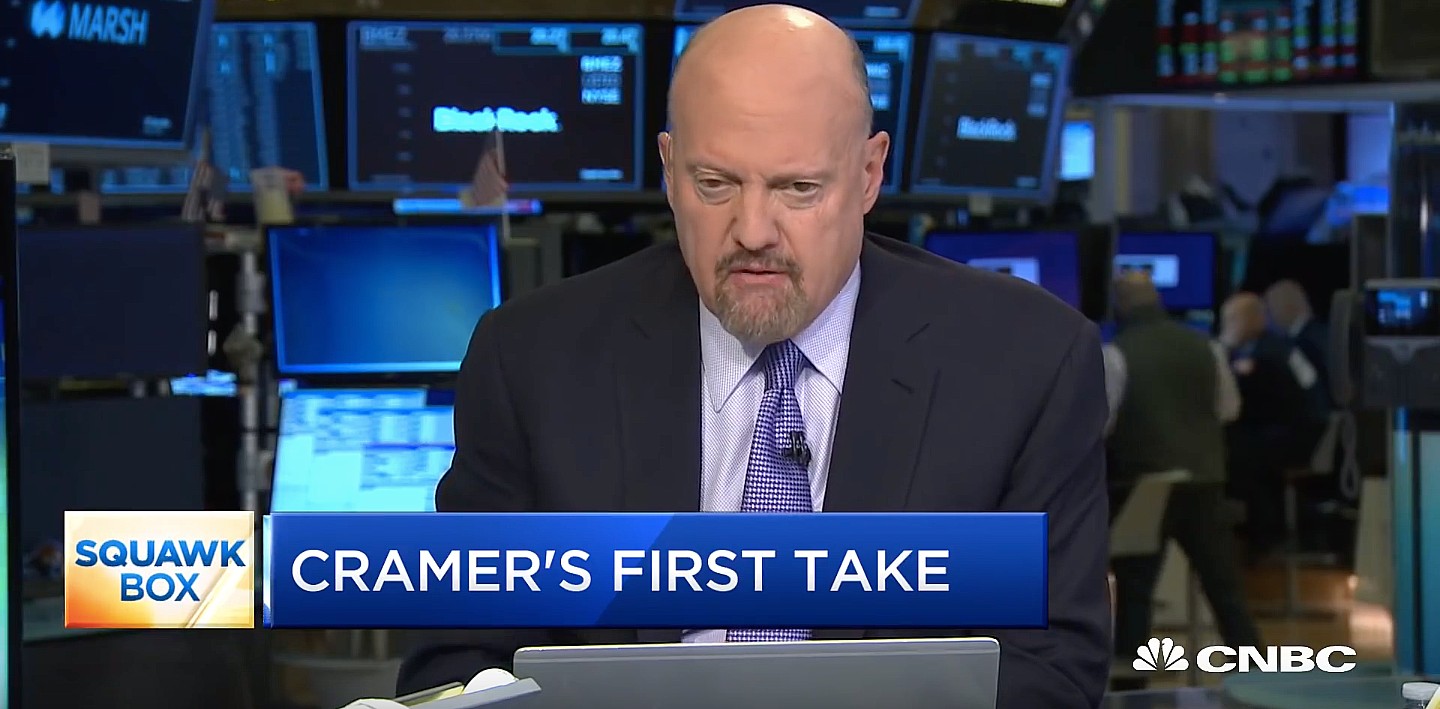
Tesla investors will be shocked by analyst Jim Cramer’s latest assessment of the company.
When it comes to Tesla analysts, many of them are consistent. The bulls usually stay the bulls, and the bears usually stay the bears. The notable analysts on each side are Dan Ives and Adam Jonas for the bulls, and Gordon Johnson for the bears.
Jim Cramer is one analyst who does not necessarily fit this mold. Cramer, who hosts CNBC’s Mad Money, has switched his opinion on Tesla stock (NASDAQ: TSLA) many times.
He has been bullish, like he was when he said the stock was a “sleeping giant” two years ago, and he has been bearish, like he was when he said there was “nothing magnificent” about the company just a few months ago.
Now, he is back to being a bull.
Cramer’s comments were related to two key points: how NVIDIA CEO Jensen Huang describes Tesla after working closely with the Company through their transactions, and how it is not a car company, as well as the recent launch of the Robotaxi fleet.
Jensen Huang’s Tesla Narrative
Cramer says that the narrative on quarterly and annual deliveries is overblown, and those who continue to worry about Tesla’s performance on that metric are misled.
“It’s not a car company,” he said.
He went on to say that people like Huang speak highly of Tesla, and that should be enough to deter any true skepticism:
“I believe what Musk says cause Musk is working with Jensen and Jensen’s telling me what’s happening on the other side is pretty amazing.”
Tesla self-driving development gets huge compliment from NVIDIA CEO
Robotaxi Launch
Many media outlets are being extremely negative regarding the early rollout of Tesla’s Robotaxi platform in Austin, Texas.
There have been a handful of small issues, but nothing significant. Cramer says that humans make mistakes in vehicles too, yet, when Tesla’s test phase of the Robotaxi does it, it’s front page news and needs to be magnified.
He said:
“Look, I mean, drivers make mistakes all the time. Why should we hold Tesla to a standard where there can be no mistakes?”
It’s refreshing to hear Cramer speak logically about the Robotaxi fleet, as Tesla has taken every measure to ensure there are no mishaps. There are safety monitors in the passenger seat, and the area of travel is limited, confined to a small number of people.
Tesla is still improving and hopes to remove teleoperators and safety monitors slowly, as CEO Elon Musk said more freedom could be granted within one or two months.
News
Tesla launches ultra-fast V4 Superchargers in China for the first time
Tesla has V4 Superchargers rolling out in China for the first time.
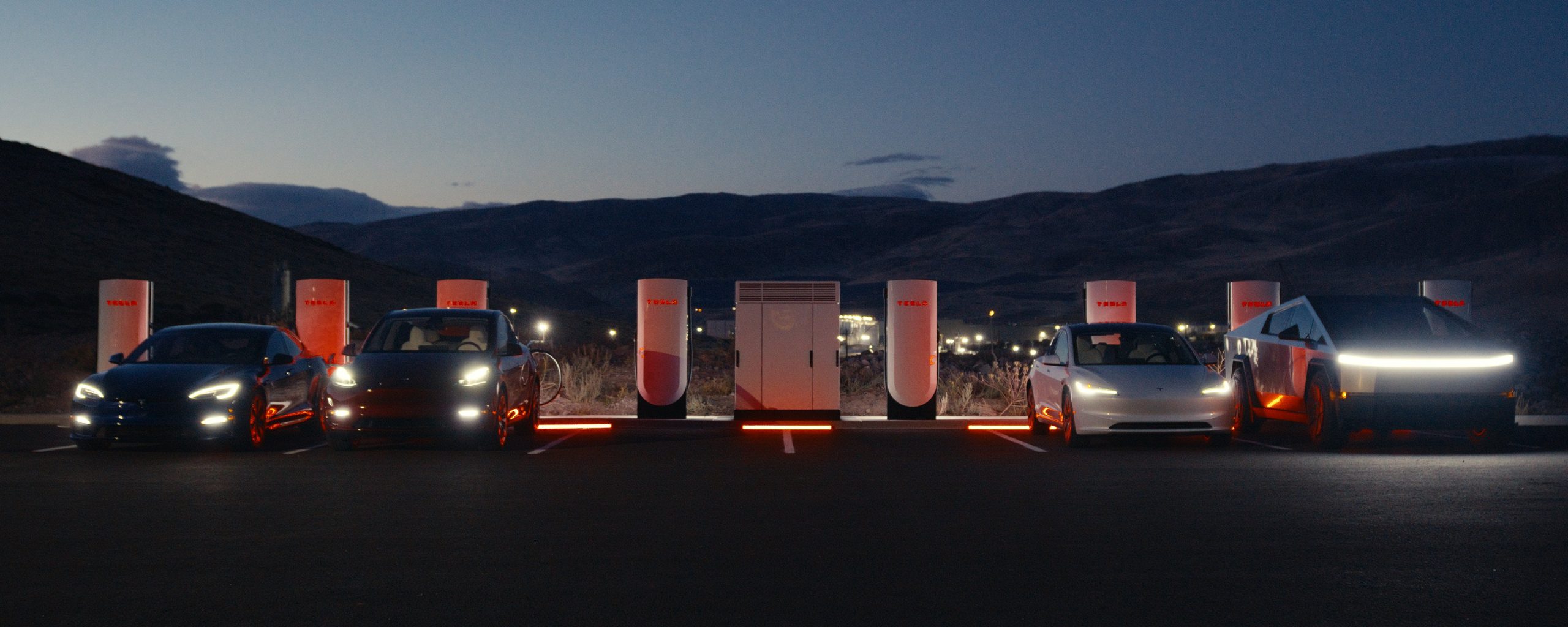
Tesla already has nearly 12,000 Supercharger piles across mainland China. However, the company just initiated the rollout of the ultra-fast V4 Superchargers in China for the first time, bringing its quick-charging piles to the country for the first time since their launch last year.
The first batch of V4 Superchargers is now officially up and running in China, the company announced in a post on Chinese social media outlet Weibo today.
The company said in the post:
“The first batch of Tesla V4 Superchargers are online. Covering more service areas, high-speed charging is more convenient, and six-layer powerful protection such as rain and waterproof makes charging very safe. Simultaneously open to non-Tesla vehicles, and other brands of vehicles can also be charged. There are more than 70,000 Tesla Superchargers worldwide. The charging network layout covers 100% of the provincial capitals and municipalities in mainland China. More V4 Superchargers will be put into use across the country. Optimize the charging experience and improve energy replenishment efficiency. Tesla will accompany you to the mountains, rivers, lakes, and seas with pure electricity!”
The first V4 Superchargers Tesla installed in China are available in four cities across the country: Shanghai, Zhejiang, Gansu, and Chongqing.
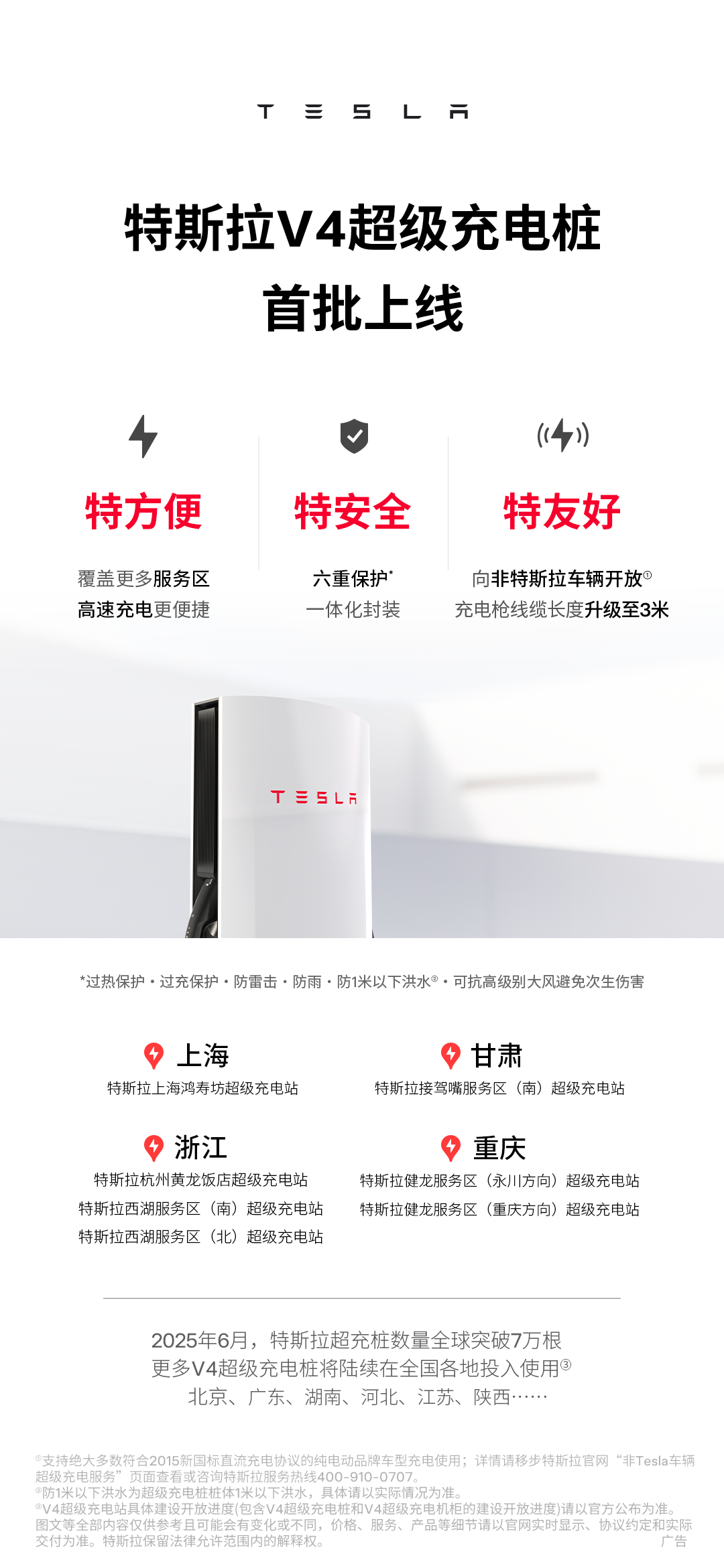
Credit: Tesla China
Tesla has over 70,000 Superchargers worldwide. It is the most expansive and robust EV charging network in the world. It’s the main reason why so many companies have chosen to adopt Tesla’s charging connector in North America and Europe.
In China, some EVs can use Tesla Superchargers as well.
The V4 Supercharger is capable of charging vehicles at speeds of up to 325kW for vehicles in North America. This equates to over 1,000 miles per hour of charging.
Elon Musk
Elon Musk hints at when Tesla could reduce Safety Monitors from Robotaxi
Tesla could be reducing Safety Monitors from Robotaxi within ‘a month or two,’ CEO Elon Musk says.
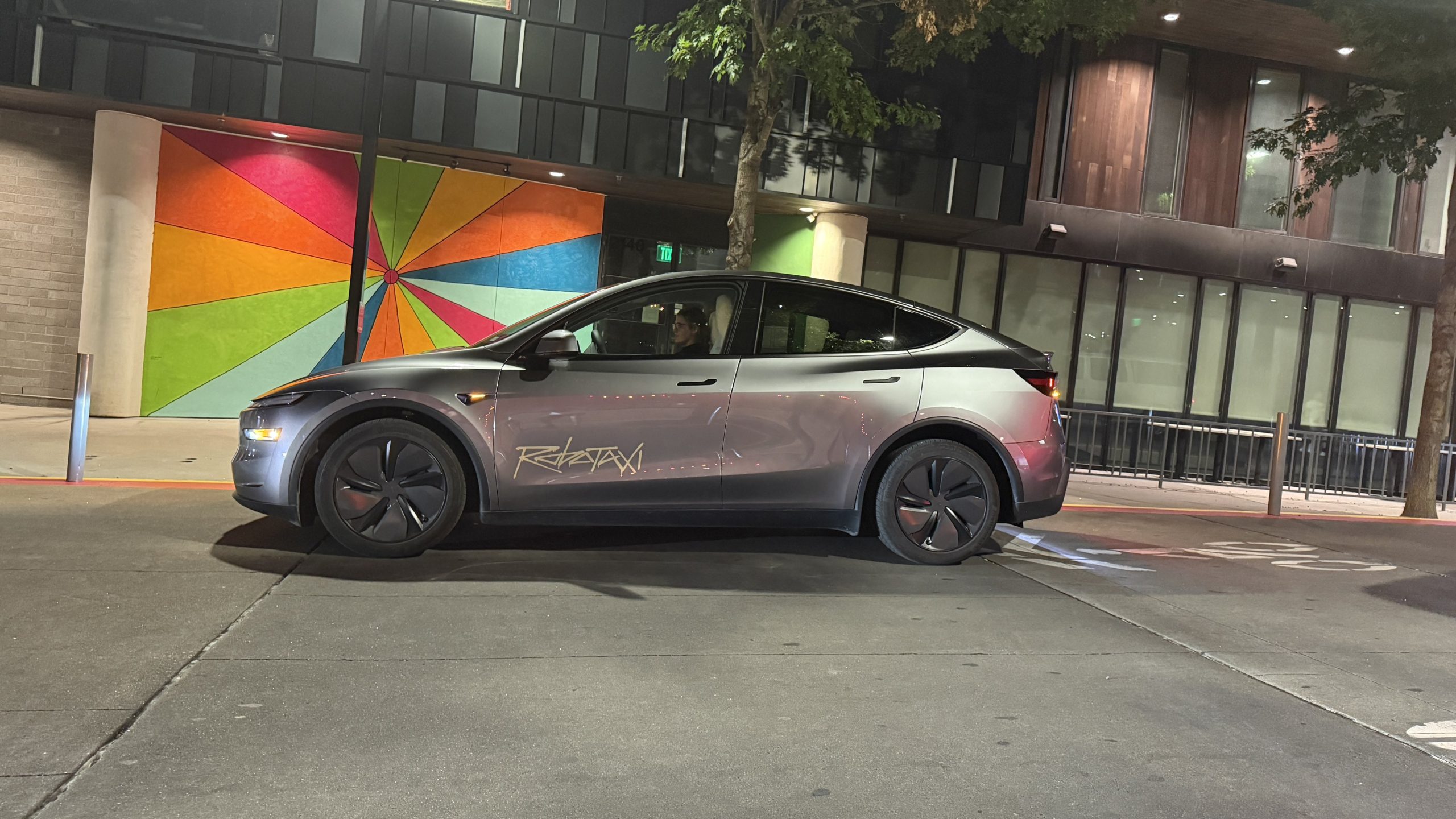
Elon Musk hinted at when Tesla could begin reducing Safety Monitors from its Robotaxis. Safety Monitors are Tesla employees who sit in the front passenger seat during the driverless rides, and are there to ensure safety for occupants during the earliest rides.
Tesla launched its Robotaxi fleet in Austin last Sunday, and after eight days, videos and reviews from those who have ridden in the driverless vehicles have shown that the suite is safe, accurate, and well coordinated. However, there have been a few hiccups, but nothing that has put anyone’s safety in danger.
A vast majority — close to all of the rides — at least according to those who have ridden in the Robotaxi, have been performed without any real need for human intervention. We reported on what was the first intervention last week, as a Safety Monitor had to step in and stop the vehicle in a strange interaction with a UPS truck.
Watch the first true Tesla Robotaxi intervention by safety monitor
The Tesla and UPS delivery truck were going for the same street parking space, and the Tesla began to turn into it. The UPS driver parallel parked into the spot, which was much smaller than his truck. It seemed to be more of an instance of human error instead of the Robotaxi making the wrong move. This is something that the driverless cars will have to deal with because humans are aggressive and sometimes make moves they should not.
The Safety Monitors have not been too active in the vehicles. After all, we’ve only seen that single instance of an intervention. There was also an issue with the sun, when the Tesla braked abnormally due to the glare, but this was an instance where the car handled the scenario and proceeded normally.
With the Robotaxi fleet operating impressively, some are wondering when Tesla will begin scaling back both the Safety Monitors and Teleoperators that it is using to ensure safety with these early rides.
CEO Elon Musk answered the inquiry by stating, “As soon as we feel it is safe to do so. Probably within a month or two.”
As soon as we feel it is safe to do so.
Probably within a month or two. We continue to improve the Tesla AI with each mile driven.
— Elon Musk (@elonmusk) June 30, 2025
Musk’s response seems to confirm that there will be fewer Teleoperators and Safety Monitors in the coming months, but there will still be some within the fleet to ensure safety. Eventually, that number will get to zero.
Reaching a point where Tesla’s Robotaxi is driverless will be another significant milestone for the company and its path to fully autonomous ride-sharing.
Eventually, Tesla will roll out these capabilities to consumer-owned vehicles, offering them a path to generate revenue as their car operates autonomously and completes rides.
For now, Tesla is focusing on perfecting the area of Austin where it is currently offering driverless rides for just $4.20 to a small group of people.
-

 News5 days ago
News5 days agoTesla Robotaxi’s biggest challenge seems to be this one thing
-
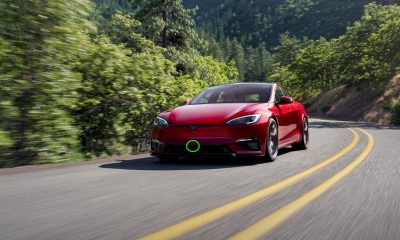
 News2 weeks ago
News2 weeks agoTesla confirms massive hardware change for autonomy improvement
-

 Elon Musk2 weeks ago
Elon Musk2 weeks agoElon Musk slams Bloomberg’s shocking xAI cash burn claims
-
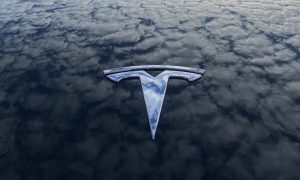
 News2 weeks ago
News2 weeks agoTesla features used to flunk 16-year-old’s driver license test
-
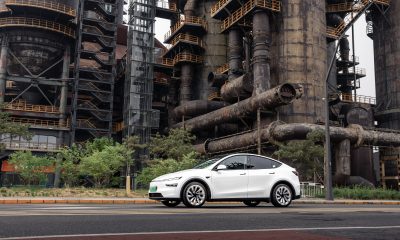
 News2 weeks ago
News2 weeks agoTesla China roars back with highest vehicle registrations this Q2 so far
-

 News2 weeks ago
News2 weeks agoTexas lawmakers urge Tesla to delay Austin robotaxi launch to September
-

 News2 weeks ago
News2 weeks agoTesla dominates Cars.com’s Made in America Index with clean sweep
-

 News2 weeks ago
News2 weeks agoTesla’s Grok integration will be more realistic with this cool feature




